
About Amanda Mixon
Amanda Mixon, PA-C, is a physician assistant specializing in rheumatology at UCHealth's Rheumatology Clinic in Fort Collins, Colorado. With over 17 years of experience, she focuses on managing inflammatory conditions such as rheumatoid arthritis, psoriatic arthritis, and connective tissue diseases like lupus. Amanda emphasizes a team-based approach to care, working closely with both patients and specialists to ensure timely and effective treatment plans.
She is also a co-founder of the Rheumatology Advanced Practice Providers (RhAPP) group, where she contributes to educating and supporting colleagues in rheumatology. Amanda's dedication to patient care extends to fostering collaboration between rheumatology and dermatology, particularly in managing complex connective tissue diseases that involve both skin and joint manifestations
by Amanda Mixon
Events

CME EVENT
6th Annual RhAPP National Conference
 September 25 @ 12:00 pm - September 27 @ 12:00 pm MST
September 25 @ 12:00 pm - September 27 @ 12:00 pm MST
Course Overview: Rheumatology Advanced Practice Providers (RhAPP) is an initiative dedicated to developing educational programs, providing professi..

CME EVENT
APAPP Regional Conference
 October 07 @ 17:00 pm - 20:00 pm MDT
October 07 @ 17:00 pm - 20:00 pm MDT
Details Coming Soon!..

CME EVENT
APAPP Regional Conference
 November 12 @ 17:00 pm - 20:00 pm PDT
November 12 @ 17:00 pm - 20:00 pm PDT
Details Coming Soon!..

CME EVENT
RhAPP Regional Chapter Summit
 January 16 @ 17:00 pm - 20:00 pm PST
January 16 @ 17:00 pm - 20:00 pm PST
Details Coming Soon!..
ILD Digital Learning Center by Amanda Mixon
Podcasts
Podcasts
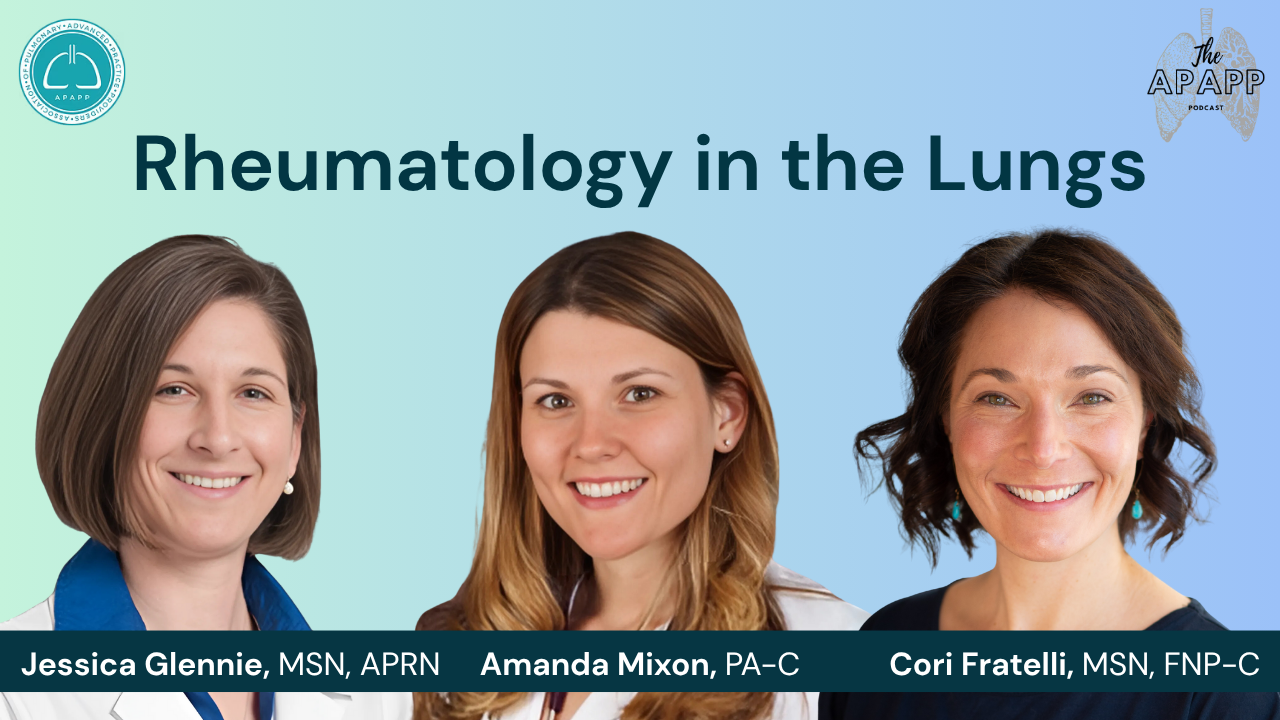

Rheumatology in the Lungs
 July 2025
July 2025
 24:47 m
24:47 m
How can Advanced Practice Providers (APPs) in rheumatology and pulmonology collaborate more effectively to manage interstitial lung disease (ILD) and connective tissue diseases (CTDs)? In this engaging episode of the APAPP Broadcast, recorded live at the Second Annual National APAPP Conference in Nashville, experts Jessica Glennie, PA-C (Cleveland Clinic), Amanda Mixon, PA-C (Colorado), and Cori Fratelli, NP (National Jewish Health) explore clinical overlaps between autoimmune rheumatic diseases and lung involvement, such as ILD in rheumatoid arthritis, systemic sclerosis (scleroderma), Sjögren’s syndrome, and myositis. The panel shares clinical pearls on: -How to recognize signs of CTDs in pulmonary patients -The importance of labs and imaging in early diagnosis -What rheumatology APPs should ask about pulmonary symptoms -The power of cross-specialty collaboration -Real-world case insights, including navigating bird-related hypersensitivity pneumonitis
Webcast
Webcast
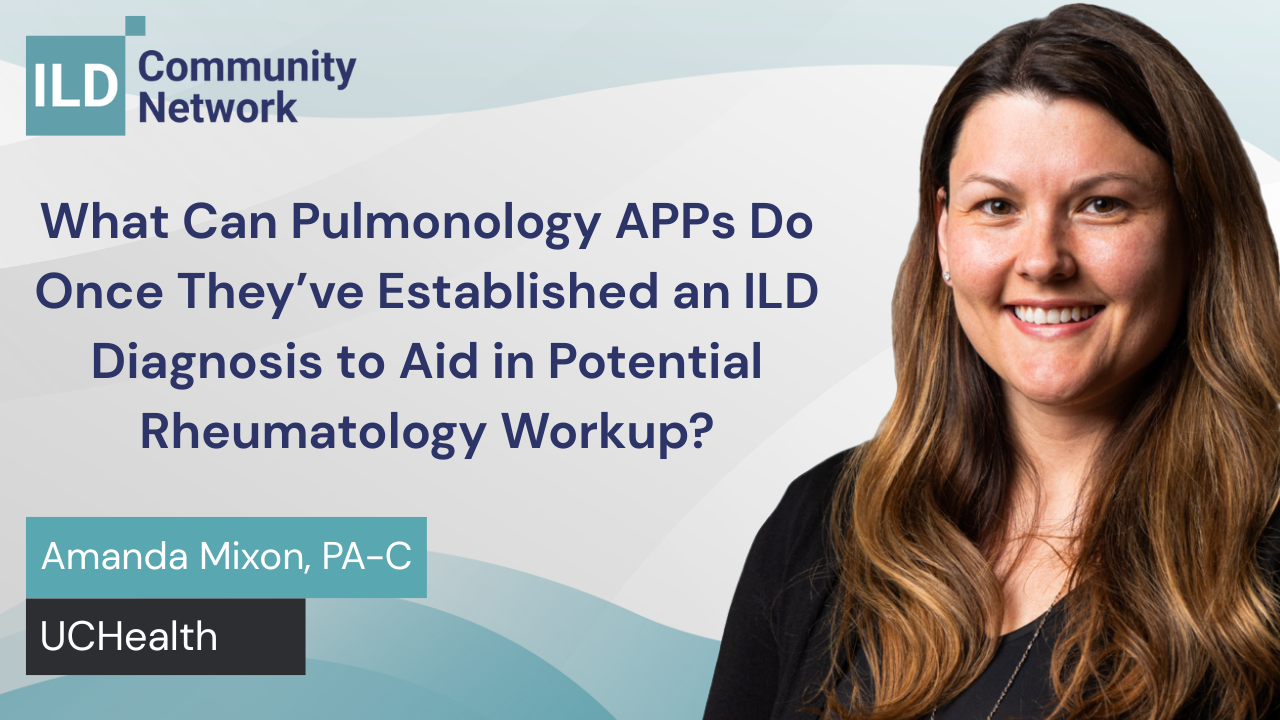

What Pulmonology APPs Can Do After an ILD Diagnosis to Support a Rheumatology Workup
 July 2025
July 2025
 01:42 m
01:42 m
Once you've confirmed a diagnosis of interstitial lung disease (ILD), what’s next? In this practical and fast-paced discussion, Amanda Mixon, PA-C, shares actionable steps for evaluating patients for underlying autoimmune or connective tissue diseases. Learn what symptoms to ask about—joint pain, morning stiffness, skin lesions, Raynaud’s, dry eyes or mouth—and how labs and rheumatology collaboration can support early detection and accurate diagnosis. This video offers clinical pearls for APPs working in pulmonology who want to strengthen their diagnostic acumen and build better cross-specialty communication with rheumatology colleagues. Topics covered: – What symptoms may signal underlying rheumatic disease in ILD patients – Key lab tests to guide your differential – When to refer to rheumatology – The value of real-time collaboration across specialties ILD care is better together. Watch now to improve your approach to autoimmune workups in pulmonary patients.
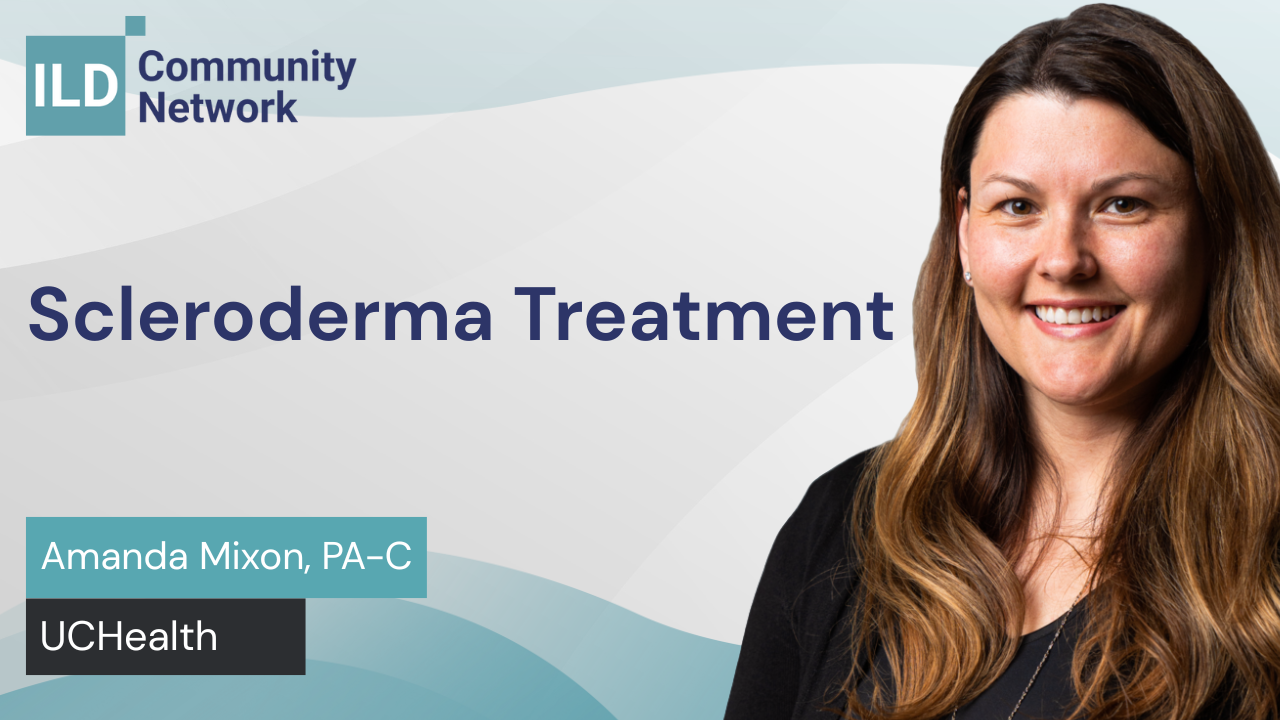

Scleroderma Treatment
 July 2025
July 2025
 01:52 m
01:52 m
In this focused discussion, Amanda Mixon, PA-C shares a practical approach to managing patients with systemic sclerosis (Scleroderma), with an emphasis on individualized care based on disease manifestation. From echocardiograms to pulmonary imaging, medication choices to vascular complications, this talk provides key insights into how APPs can tailor care to improve outcomes. Learn how to approach limited vs. diffuse Scleroderma, when to avoid glucocorticoids, and how to manage complications like digital ulcers and pulmonary involvement. Key takeaways include: – When to use echocardiograms, CT scans, and other diagnostics – Medication strategies: Mycophenolate, Selenomab, CCBs, ARBs, and more – Avoiding glucocorticoids in diffuse disease and managing risk of renal crisis – Treating symptomatically: digital ulcers, skin fibrosis, and blood flow support This is a must-watch for APPs in rheumatology, pulmonology, or primary care managing patients with Scleroderma.
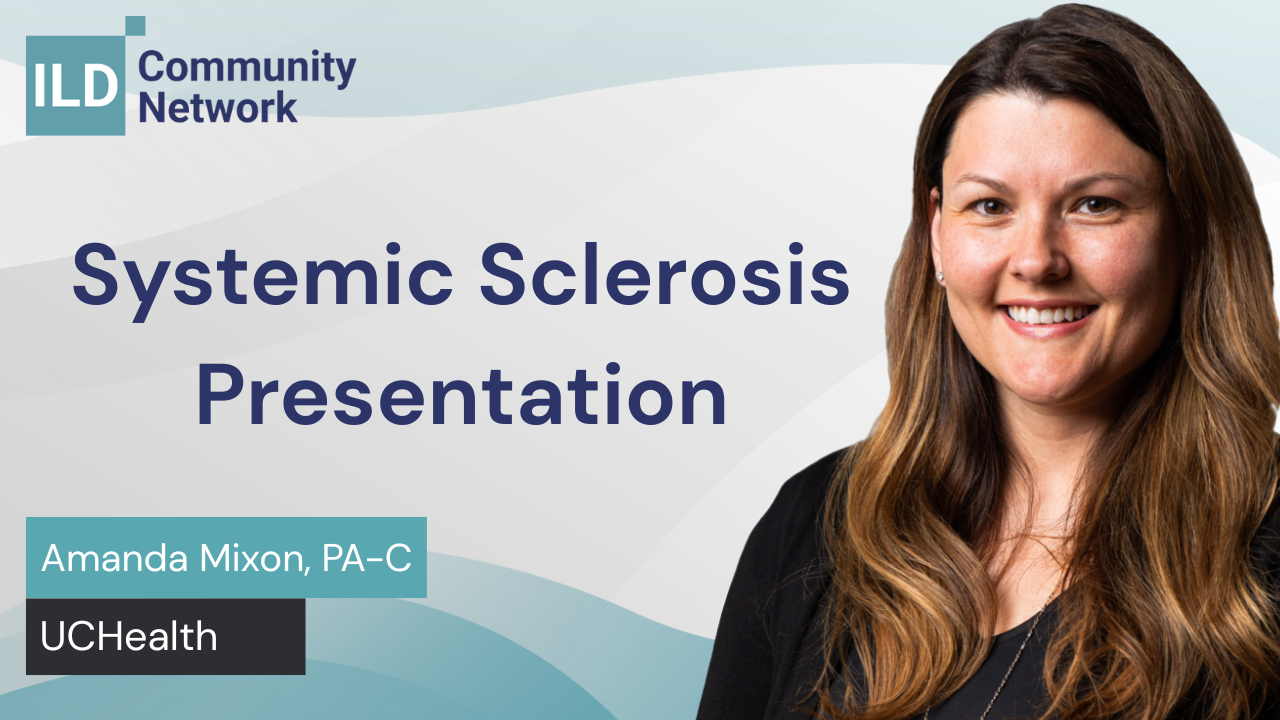

Systemic Sclerosis Presentation
 July 2025
July 2025
 11:52 m
11:52 m
In this powerful and personal clinical reflection, Amanda Mixon, PA-C, shares her journey treating patients with diffuse systemic sclerosis (Scleroderma), including key lessons learned from working at a major Scleroderma center at Northwestern. From building trust with colleagues to managing life-threatening complications like Scleroderma Renal Crisis, this video offers invaluable insights for APPs and clinicians navigating this complex autoimmune disease. You’ll hear firsthand experiences treating patients with severe skin involvement, pulmonary fibrosis, digital ulcers, GI complications, and early vasculopathy. Learn why RNA polymerase III positivity is a red flag, how to differentiate diffuse from limited SSc, and why early diagnosis and treatment are essential. What you’ll learn: – What distinguishes diffuse Scleroderma from limited forms – Clinical signs to recognize early: Raynaud’s, skin tightening, telangiectasia – The dangers of steroid use and Scleroderma Renal Crisis – Why collaboration and early referral to SSc centers can save lives – Real stories and clinical pearls from treating high-risk patients This is a must-watch for any clinician managing autoimmune diseases—especially those treating interstitial lung disease, GI complications, or vasculitis related to Scleroderma.
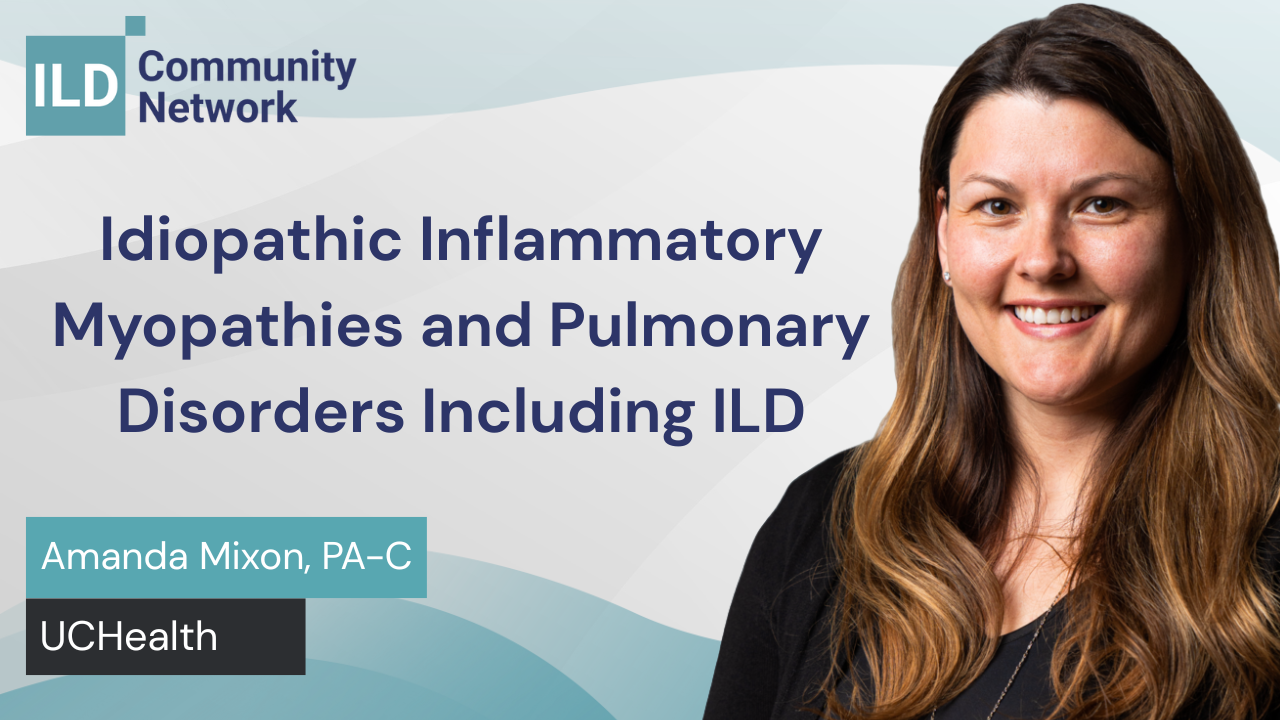

Idiopathic Inflammatory Myopathies and Pulmonary Disorders Including ILD
 July 2025
July 2025
 04:59 m
04:59 m
Inflammatory myopathies—like dermatomyositis, polymyositis, and inclusion body myositis—can be difficult to diagnose and manage, especially when they overlap with interstitial lung disease (ILD). In this clinical discussion, Amanda Mixon, PA-C, breaks down what to look for, from subtle signs like "mechanic's hands" to more serious red flags like MDA5-positive rapidly progressive ILD. Special attention is given to anti-synthetase syndrome, a condition often associated with ILD, arthritis, and elevated CK levels, and how antibody testing (e.g., Jo-1, SSA, MDA5) can guide diagnosis and urgency of care. You’ll also learn how to approach cancer screenings in patients with dermatomyositis and why a full malignancy workup is essential. What you'll learn: – How to identify anti-synthetase syndrome and inflammatory myopathies – Key clinical signs: weakness, mechanic’s hands, non-erosive arthritis – Understanding the myositis antibody panel and its clinical utility – The connection between dermatomyositis and malignancy risk – When and how to conduct a thorough cancer screening – Treatments including JAK inhibitors, IVIG, and rituximab Perfect for APPs, pulmonologists, and rheumatology teams, this video empowers you to catch early signs, personalize diagnostics, and take action.
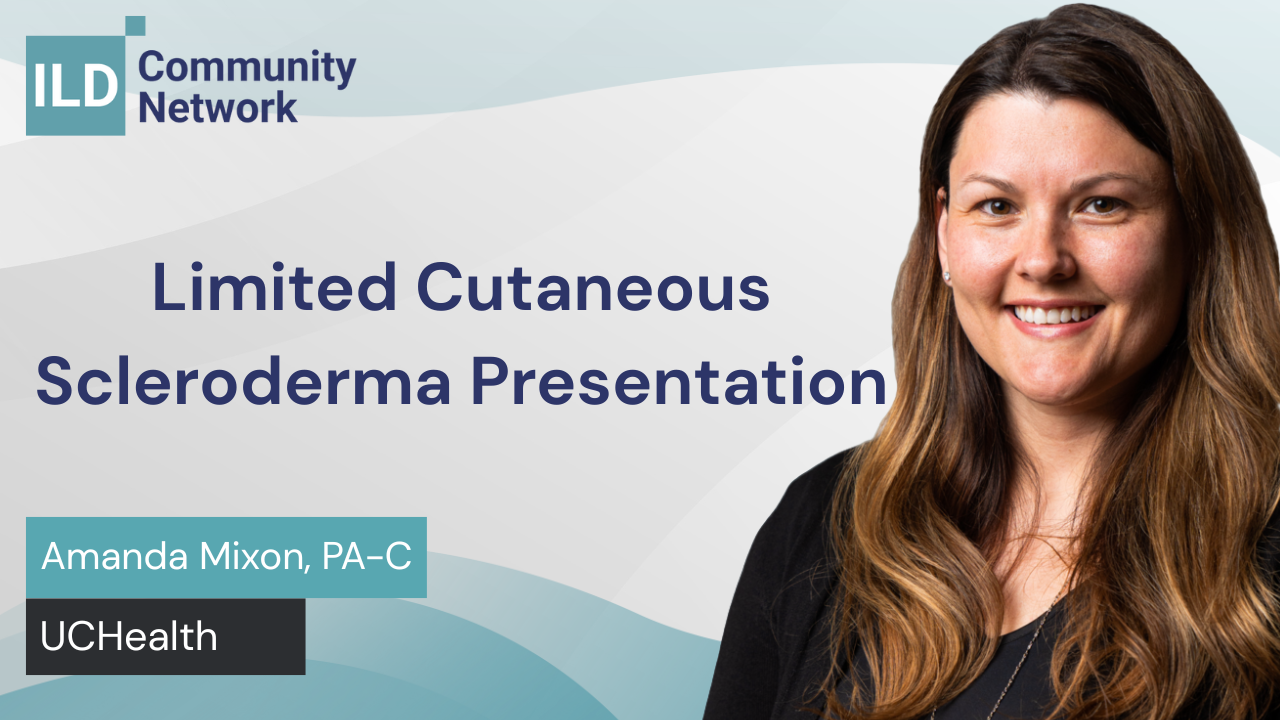

Limited Cutaneous Scleroderma Presentation
 July 2025
July 2025
 01:48 m
01:48 m
In this quick but focused clinical overview, Amanda Mixon, PA-C, explains how to identify and differentiate limited systemic sclerosis (also known as CREST syndrome) from diffuse scleroderma. Associated with centromere antibodies, limited scleroderma primarily affects the distal extremities and face, and while skin involvement is less severe, patients face distinct long-term risks—especially pulmonary hypertension. This video breaks down the classic CREST acronym (Calcinosis, Raynaud’s, Esophageal dysmotility, Sclerodactyly, and Telangiectasias), along with practical tips for early recognition and long-term management. What you'll learn: – How to recognize clinical features of limited scleroderma – The role of centromere antibodies vs. SCL-70 in diagnosis – Early signs like Raynaud’s and esophageal symptoms – What to monitor for in years 5–10: pulmonary hypertension, vascular disease – Differentiating CREST from diffuse disease This is an essential update for APPs and clinicians managing autoimmune connective tissue disease, especially in patients with progressive symptoms involving the skin, GI tract, and lungs.
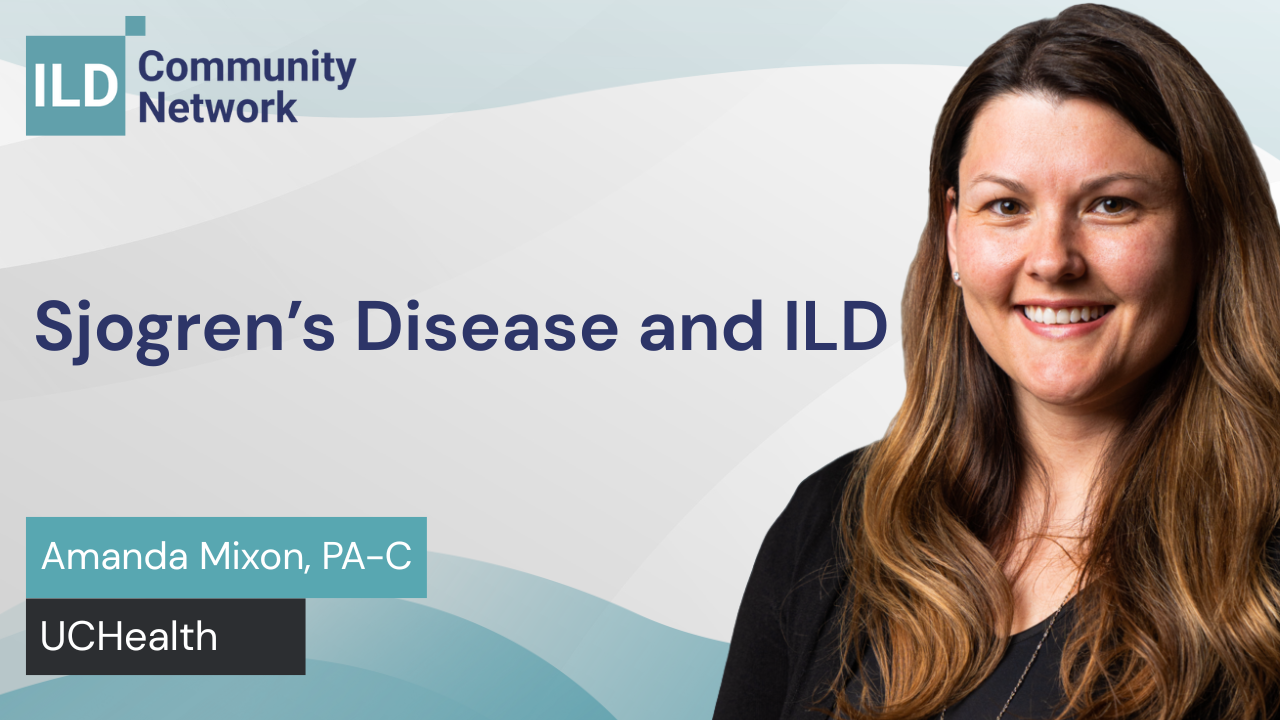

Sjogren’s Disease and ILD
 July 2025
July 2025
 01:43 m
01:43 m
In this concise and clinically insightful discussion, Amanda Mixon, PA-C, breaks down what to look for when suspecting Sjögren’s syndrome—an autoimmune condition marked by chronic dry eye and dry mouth, fatigue, and systemic manifestations. Often associated with SSA and SSB antibodies, Sjögren’s can overlap with interstitial lung disease (ILD), making it especially important for pulmonary and rheumatology providers to recognize early. Learn how to distinguish classic symptoms from environmental causes, when to consider antibody testing, and which patients may be at higher risk for more severe complications like ILD. What you’ll learn: – Clinical clues for identifying Sjögren’s in practice – Role of SSA and SSB antibodies in diagnosis – Recognizing extra-glandular manifestations: fatigue, arthritis, rashes – When to suspect ILD in Sjögren’s patients – Medication options and early steroid use considerations Whether you’re in primary care, pulmonology, or rheumatology, this video equips you to ask the right questions and understand the systemic risks behind what may appear to be “just dry mouth.”





